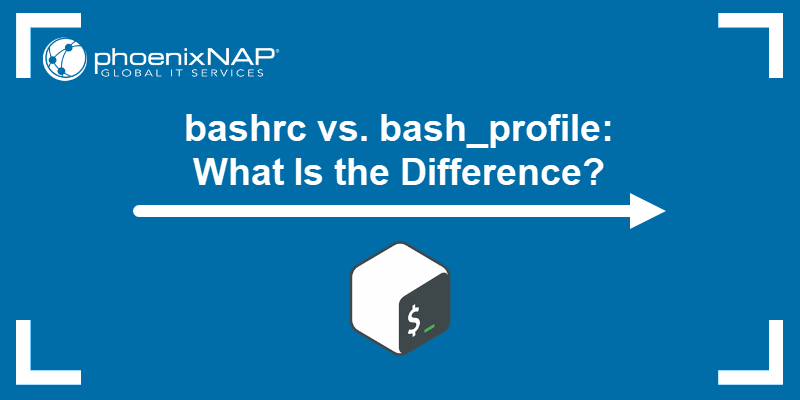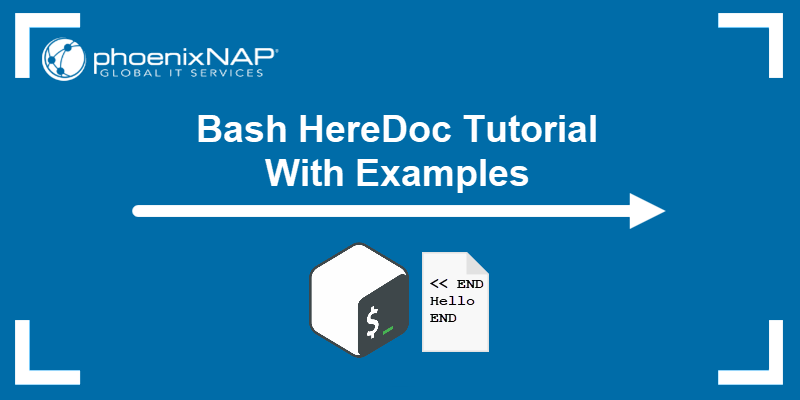The .bashrc and .bash_profile startup files help customize the Unix command-line environment. The configuration files contain useful custom information, such as PATH directories, command aliases, and custom styles.
Understanding how Bash processes these two files is key to determining where specific configurations belong.
This article explains the difference between .bashrc and .bash_profile startup files.

Prerequisites
- Command-line access.
- A text editor to create and edit files.
- A user account with sudo privileges.
Interactive and Non-Interactive Shells
A shell has two working modes:
- Interactive shell. Reads user input typed on a keyboard. Commands run in the current shell and the system waits for further instructions from the user. A Bash shell is an interactive shell.
- Non-interactive shell. Executes commands read from a file in a new subshell. The shell executes commands from the file and exits. Init, startup, and executed shell scripts start non-interactive shells.
How you run a Bash script determines the working mode. To see an example, follow the steps below:
1. Create a Bash script file (test.sh) and add the following code:
#!/bin/bash
[[ $- == *i* ]] && echo Interactive || echo Non-interactiveThe code checks whether the current shell $- contains the -i option (*i*) or not. If it does, the shell is interactive.
2. Make the script executable:
chmod +x test.sh3. Execute the script with:
./test.sh
The output shows that the shell is Non-interactive. Executing a script opens a new subshell, executes the command, and returns to the parent shell.
4. As a comparison, source the script with:
. test.sh
The output prints the shell is Interactive. The commands run in the current environment.
Bash Startup Files
Bash executes different startup files depending on whether the shell is a login or non-login shell. To check the current shell type, use the shopt command:
shopt -q login_shell && echo 'Login shell' || echo 'Non-login shell'The output prints Login shell if the user:
- Logs in from the terminal remotely (for example, via SSH).
- Logs in from the terminal locally (for example, using the
logincommand). - Launches Bash with the
-loption (bash -l).

On the other hand, the output prints Non-login shell when the user:
- Opens the terminal for the first time.
- Opens a new terminal tab.
- Launches Bash from a login shell with the
bashcommand.

Which startup files Bash reads from depends on whether the current shell is a login or a non-login shell.
Note: On Linux, the default starting terminal is an interactive non-login shell. On macOS, the default is an interactive login shell.
.bashrc
The .bashrc file is a hidden script file containing various terminal session configurations. The file executes automatically in both interactive and non-interactive non-login shells.
When running a non-login shell (subshell), the primary read configuration file is /etc/bash.bashrc. The file contains system-wide configurations for non-login shells.
Note: In RHEL, system-wide configurations for non-login shells are in /etc/bashrc.
After, the shell searches for the ~/.bashrc configuration file for the specific user.
.bash_profile
The .bash_profile file is a hidden script file with custom configurations for a user terminal session. The file automatically executes in Bash interactive login shells.
When running an interactive login shell, the system reads /etc/profile first. The file stores global configurations for login shells, and the configurations in it apply to all users.
Next, the Bash shell searches for specific user configuration files in the following order:
- ~/.bash_profile
- ~/.bash_login
- ~/.profile
The first found file is read and executed.
Note: Most Linux distributions have the .profile configuration file set up because it's read by any shell type, including Bash.
Add the following code to the .bash_profile file to force reading .bashrc in an interactive login shell session:
if [ -f ~/.bashrc ]; then
. ~/.bashrc
fiDifference Between .bashrc and .bash_profile
The critical differences between .bashrc and .bash_profile are:
- .bashrc defines a user's settings when running a subshell. Add custom configurations to this file to make parameters available in subshells for a specific user.
- .bash_profile defines a user's settings when running a login shell. Add custom configurations to this file to make parameters available to a specific user when running a login shell.
Conclusion
After reading this guide, you know the main differences between .bashrc and .bash_profile.
Next, learn how to customize the Bash prompt in Linux.



